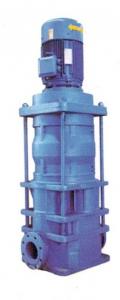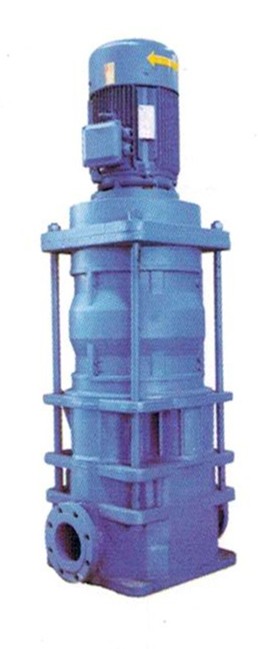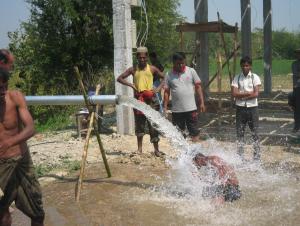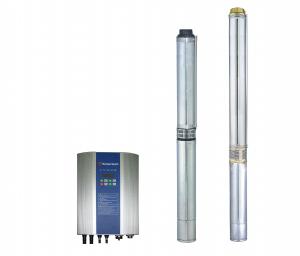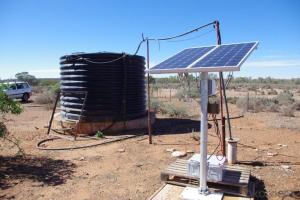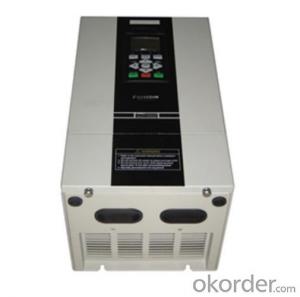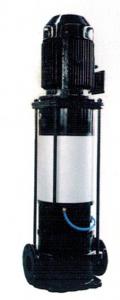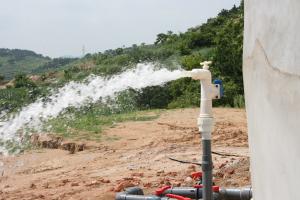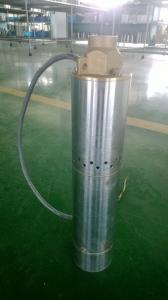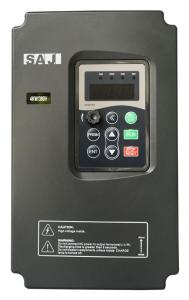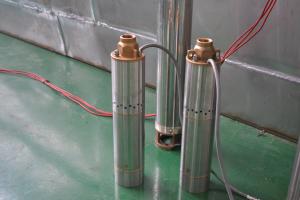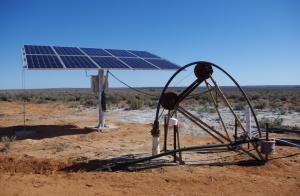Off Grid Solar Pump L3D-60-120
- Loading Port:
- China Main Port
- Payment Terms:
- TT OR LC
- Min Order Qty:
- -
- Supply Capability:
- 300 sets unit/month
OKorder Service Pledge
OKorder Financial Service
You Might Also Like
Product description:
Product: Solar water pump
Model:L3D-60-120
Appilication:
surface pump
for surface water of pond, river, lake
for irrigation of a big farm with 40000 m2 on the top of a mountain
Product specification:
flow rate:60m3/ hour, 420m3/day.
lift: 10m-120m
pump diameter: 610mm
Pump installed on the ground, outlet to the water surface:4m
with AC motor, motor power:22kW
but only need solar power:24kW(while Grundfos pump needs at least 45kW solar power, our pump can save more than 50% solar panel power,save USD15000 cost for solar panel per set.
Material:
Pump inside: stainless steel and wearable nylon,it enables our solar pump to have 10 years sevice life.
Motor : AC motor, 380V , three phase , 50Hz. The pump also can connect with grid power directly.
Certification:
3 International patent
ISO9001
CE
Warranty:2 years
- Q: Are there different sizes or capacities of solar pumps available?
- Yes, there are different sizes and capacities of solar pumps available. The size and capacity of a solar pump can vary depending on the specific application and requirements. Some solar pumps are designed for small-scale applications such as irrigation for gardens, while others are capable of pumping water for large-scale agricultural or industrial purposes.
- Q: Are solar pumps weatherproof?
- Solar pumps are indeed weatherproof. They have been engineered to endure diverse weather conditions, such as rain, snow, and extreme temperatures. Typically, they are constructed using sturdy materials that resist corrosion and UV radiation. Moreover, they often come with protective covers or casings to safeguard the internal components against moisture and other environmental elements. This impeccable weatherproof design guarantees the efficient and dependable operation of solar pumps in any outdoor environment, making them ideal for a variety of uses, such as irrigation, water supply, and fountain systems.
- Q: Can a solar pump be used in both residential and commercial applications?
- Yes, a solar pump can be used in both residential and commercial applications.
- Q: Can a solar pump be used in agricultural applications?
- Yes, a solar pump can be used in agricultural applications. Solar pumps use energy from the sun to power the pump, making them a sustainable and cost-effective option for irrigating crops, livestock watering, and other agricultural needs. They can provide reliable water supply in remote areas without the need for grid electricity, reducing dependency on fossil fuels and lowering operational costs for farmers.
- Q: Are there any size limitations for a solar pump system?
- There are generally no specific size limitations for a solar pump system. The size of a solar pump system can vary depending on the specific application and requirements. Solar pump systems can be designed to meet a wide range of needs, from small-scale residential systems to large-scale agricultural or industrial applications. The size of the solar pump system will depend on factors such as the desired flow rate, the total head (vertical distance) the pump needs to overcome, and the available solar energy resources in the location. In general, larger systems will require more solar panels and storage capacity to ensure consistent operation, while smaller systems can be designed with fewer panels and storage capacity. Ultimately, the size of a solar pump system is determined by the specific needs and constraints of the project.
- Q: Can solar pumps be operated remotely or controlled through a mobile app?
- Yes, solar pumps can be operated remotely or controlled through a mobile app. With the integration of IoT (Internet of Things) technology, solar pump systems can be equipped with sensors and connected to a network, allowing users to monitor and control their pumps remotely using a mobile app. This enables convenient and efficient management of water pumping operations, providing flexibility and ease of use.
- Q: How does a solar pump handle water source contamination from pesticide runoff?
- A solar pump does not directly handle water source contamination from pesticide runoff. However, it can play a role in mitigating the issue by providing an alternative source of water. By utilizing solar energy to power the pump, it can extract clean water from a different source, reducing the dependency on contaminated water sources affected by pesticide runoff. Nonetheless, addressing and preventing pesticide contamination at its source remains crucial for long-term water quality improvement.
- Q: Can a solar pump be used in areas with limited access to water monitoring systems?
- Yes, a solar pump can be used in areas with limited access to water monitoring systems. Since solar pumps run on solar energy and do not require grid electricity, they can be installed in remote locations without the need for a power source. While water monitoring systems are beneficial for tracking water usage and quality, a solar pump can still provide reliable access to water in areas where monitoring systems are not available or accessible.
- Q: Are there any limitations on the temperature range that solar pumps can operate in?
- Yes, there are limitations on the temperature range that solar pumps can operate in. Solar pumps are designed to work in specific temperature ranges, typically between -40°C to 60°C (-40°F to 140°F). Extreme temperatures outside of this range can negatively impact the performance and efficiency of solar pumps.
- Q: What is the expected noise level of a solar pump during operation?
- The expected noise level of a solar pump during operation can vary depending on various factors such as the type and model of the pump, the size of the system, and the specific installation conditions. However, in general, solar pumps are known for their quiet operation. Compared to traditional fuel-powered pumps or electric pumps, solar pumps tend to produce minimal noise or even operate silently. This is due to the absence of an internal combustion engine or noisy mechanical components, as solar pumps rely on solar energy to power their operation. Therefore, the expected noise level of a solar pump during operation is typically very low, allowing for a more peaceful and quiet environment.
Send your message to us
Off Grid Solar Pump L3D-60-120
- Loading Port:
- China Main Port
- Payment Terms:
- TT OR LC
- Min Order Qty:
- -
- Supply Capability:
- 300 sets unit/month
OKorder Service Pledge
OKorder Financial Service
Similar products
Hot products
Hot Searches
Related keywords
